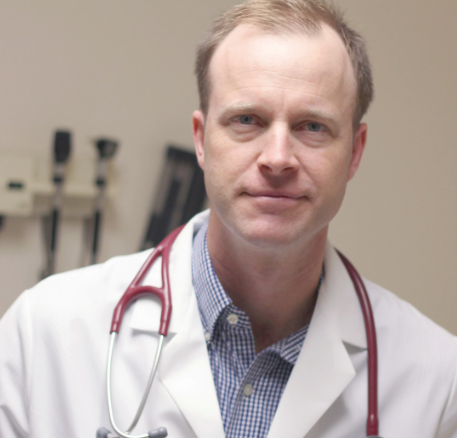 A longstanding advocate for integrating oral health education into the curricula of a range of healthcare practices, Hugh Silk, MD, MPH, is an original co-principal investigator (PI) and site PI for the Center for Integration of Primary Care and Oral Health (CIPCOH). He is a family physician in the Department of Family Medicine and Community Health at the University of Massachusetts Chan Medical School.
A longstanding advocate for integrating oral health education into the curricula of a range of healthcare practices, Hugh Silk, MD, MPH, is an original co-principal investigator (PI) and site PI for the Center for Integration of Primary Care and Oral Health (CIPCOH). He is a family physician in the Department of Family Medicine and Community Health at the University of Massachusetts Chan Medical School.
Tell us a little bit about your background.
I’m originally from Canada, and I received my undergraduate degree in government from Harvard University before attending McMaster Medical School in Hamilton, Ontario. I first started noticing the connection between oral and overall health when I was completing my residency at the University of Massachusetts Chan Medical School in Worcester. The children I was treating had lots of cavities, and many of the adults in the hospital had poor dentition as well.
This was something I hadn’t seen in Canada while completing medical school, so I started asking UMass faculty about it. They didn’t seem to have any good answers either, so I began educating myself and discovered that Worcester didn’t have fluorinated water and few dentists accepted MassHealth, which were major contributors to the oral problems I was seeing in my patients.
I wanted more people in the medical community to learn about this connection, which led to creating a network of other family doctors who together developed a national curriculum for medical professionals. This initiative became Smiles for Life, which is now a national and international organization on a mission to increase access to dental care and improve the country and the world’s total health and wellness.
What attracted you to work that prioritizes the integration of oral health and primary care?
Over the two decades I’ve been doing this, more and more studies show the relationship between inflammation in the mouth and heart disease, diabetes, pre-term labor, and a host of other conditions.
Beyond the direct health effects, there is a huge connection between oral health and self-confidence. I work clinically with populations experiencing homelessness and addiction issues, and whether it’s having many cavities or losing teeth, people can become very embarrassed and self-conscious about their mouths. When we can help someone work on these issues and even get partials or dentures, it’s fantastic to see them get that confidence back, find a job, and move forward with their lives.
What are some of your current projects that are related to the Initiative and/or CIPCOH?
The 100 Million Mouths Campaign (100MMC) was launched in 2020 to create a system that will generate future PCPs that can engage their patients and improve the oral health of at least 100 million mouths over the next decade.
We know that there are more than 100 million people in America who don’t see dentist in a given year. Getting to that population would make a huge difference in oral health in this country, and if you calculate how many people graduate from various medical programs and how many patients they will see over their careers, this is a feasible goal.
We began by surveying oral health integration programs around the country and concluded there was a huge need. Our research showed us that we needed local champions—one in each state—who could engage our medical schools, residency programs, and other educational settings to connect oral health into other healthcare practices. Right now, we have training programs and champions in 14 states with the goal to have them in all 50 over the next five years.
What makes you the proudest about the work that the Initiative and CIPCOH undertake?
We engage a lot of medical students doing summer research, capstone projects, senior scholar programs, and more. These people are the future of the profession, and they are involved in a litany of important projects, from analyzing how many oral health articles are published in primary care journals, to working to include oral health checkups as part of Worcester’s free health clinics.
I am also proud of the fact that CIPCOH and the Initiative are really digging in to explore and address oral health inequities and social injustice; we are expanding those who are advising us, and who we are adding to our team, and we’re making sure that everything we teach and do has a lens that will address these unacceptable gaps.
In your opinion, what does the future of integrated primary care and oral health look like?
Pretty amazing things are going on right now. The Centers for Disease Control (CDC), the OPEN Network, and Santa Fe Group are really engaged from top down, with many broad and impressive working groups around the country that include practitioners from dentistry, public health, primary care, and more. All these people working together gives me hope that despite some recent policy setbacks, we’ll eventually be able to provide the integrated care the country needs.
I think one of the major things that is still eluding us when it comes to the oral health of the general population is really basic primary prevention: the importance of eating and drinking less sugar and brushing your teeth twice a day. We need champions here as well—influencers. Yes, maybe those on social media, but also promotoras or community health workers who help drive home these messages alongside advice on prenatal care or vaccines. I see the real progress in this arena happening at the community level instead of doctors’ or dentists’ offices.
